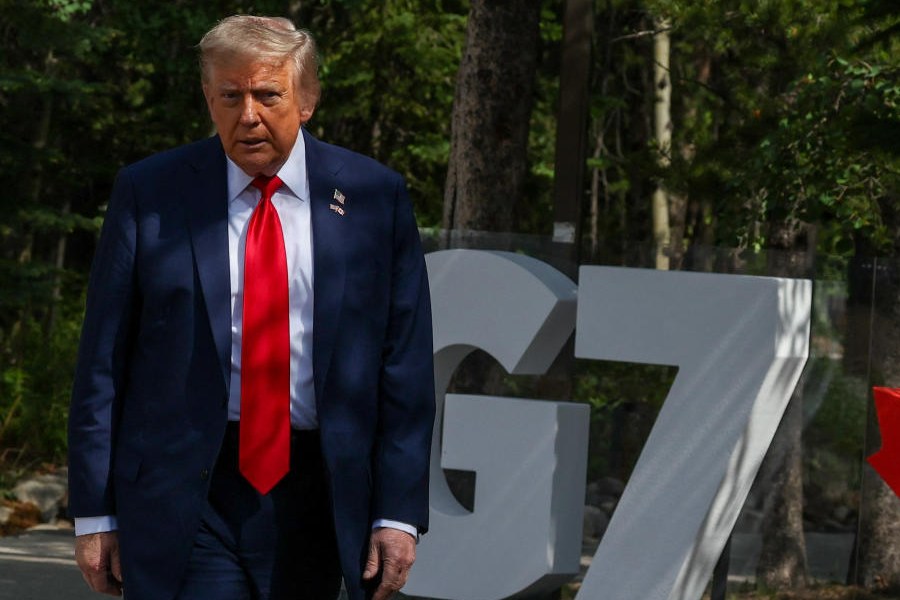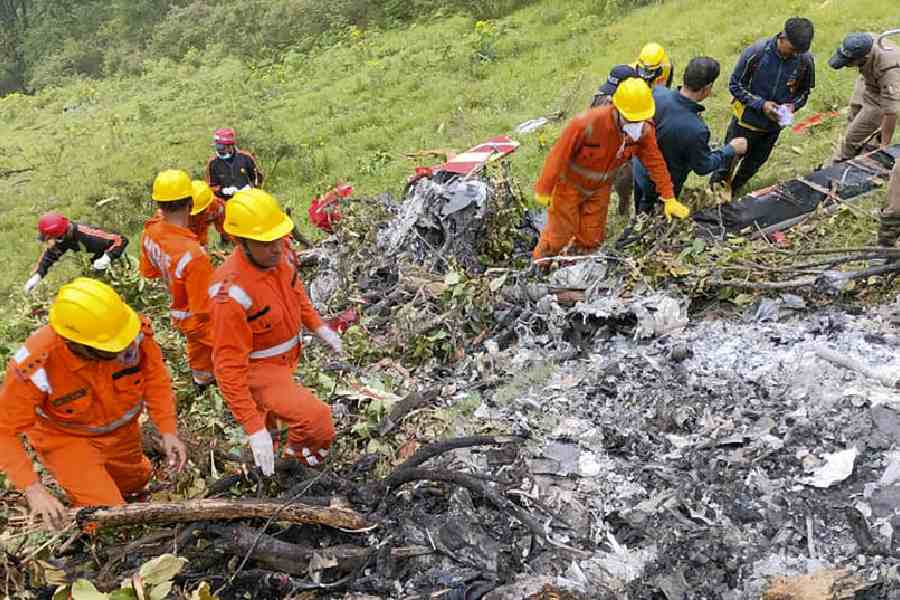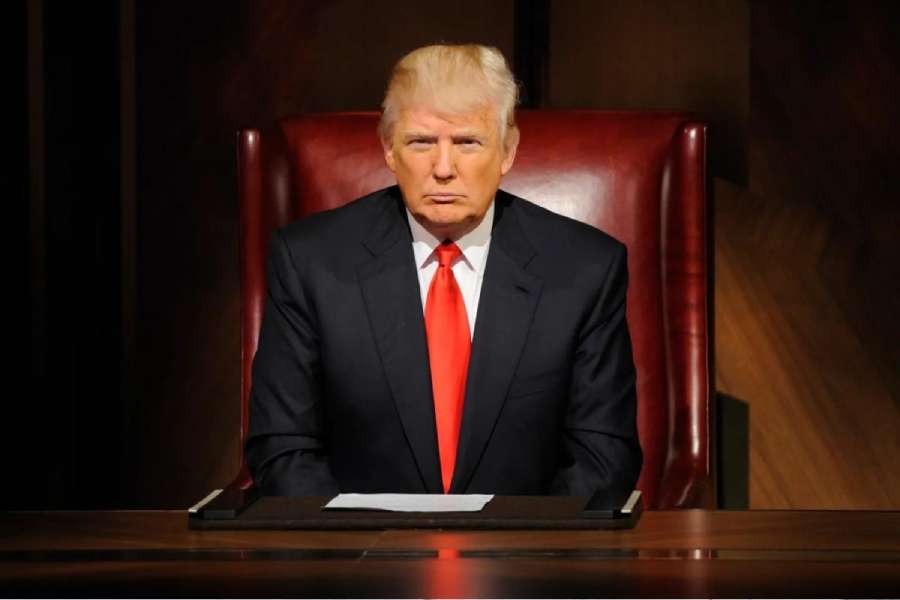|
|
The ambiguous aspects of the nuclear deal between India and the United States of America have surfaced again with the decision of the Nuclear Suppliers Group at its June meeting in the Netherlands to “strengthen its guidelines on the transfer of sensitive enrichment and reprocessing technologies” by adding objective criteria that would require recipient countries to be “in full compliance” with the nuclear non-proliferation treaty, adhere to safeguard provisions of the International Atomic Energy Agency and allow more extensive monitoring of their nuclear facilities under the terms of an additional protocol.
This development should not have surprised us. The issue of access to enrichment and reprocessing technologies had figured prominently in our negotiations with the US on the nuclear deal, with India determined to exclude any provision that would make it permanently ineligible for ENR transfers because of its non-NPT status. Any such restriction would have implied continuation of nuclear sanctions, besides detracting from the objective of “full civilian nuclear cooperation” and diluting India’s status as a country “possessing advanced nuclear technology”. Even though India possesses its own ENR technologies, this was considered an issue of principle.
The US administration tried to be responsive to India’s concerns and simultaneously address Congressional opposition to ENR transfers to India. The 123 agreement therefore does not legally close the issue, and yet makes it virtually impossible to give India satisfaction. It speaks of possible transfer of “sensitive nuclear technology” if the 123 agreement is amended, while noting that dual use items that could be used in enrichment or reprocessing will be subject to US laws. This way the US found it possible to satisfy India politically without assuming any concrete legal obligation. Significantly, the later India-US reprocessing agreement, unlike US agreements with Japan and Euratom, also excludes transfer of ENRs.
After the latest NSG decision and aggrieved reactions in India, US sources have rightly recalled repeated American statements barring ENR transfers to India. In November 2005 itself, the state department had informed the senate foreign relations committee that the US did not intend to transfer enrichment and reprocessing technology to India. In April 2006 the then secretary of state reiterated this assurance to the senator, Dick Lugar. The infamous Hyde Act contained ENR related restrictions. While endorsing the nuclear deal the House foreign affairs committee noted categorically that no part of the legislation should be interpreted to make an exception for India with regard to the US policy not to export ENRs to any country. The senate foreign relations committee, in turn, called for the tightening of restrictions on export of ENRs in the NSG. The conference committee of the House and the senate reiterated the call to work with the NSG members individually and collectively to further restrict transfers on ENRs, including to India. The G8 statement of July 2009 called on the NSG to make further progress “on mechanisms to strengthen controls on transfers” of ENRs.
In the face of the NSG decision, India has clung to the debatable proposition that it obtained a commitment from the US for “full civilian nuclear cooperation” that prospectively covers ENRs, as well as a “clean waiver” from the NSG from the restrictive conditions applicable to nuclear transfers to non-nuclear weapon states. In reality, the US administration’s own intention to tighten ENR transfers has been backed vociferously by the American non-proliferation diehards who, already unhappy with the Indo-US nuclear deal for impairing the global non-proliferation regime, have been advocating denial of these technologies to India as a non-NPT country. Their objective has been to roll back through the revised NSG guidelines the so-called clean waiver to India, compel India to accept enhanced non-proliferation obligations, remove the “discrimination” between India and Pakistan by adopting a criteria based approach for NSG membership in order to give China a political incentive to restrain its nuclear cooperation with Pakistan. The June NSG meeting has endorsed a criteria based approach advocated by the combined anti-Indian US and Chinese lobbies.
After the NSG move, the US administration continues its equivocation. The state department, mindful of Indian political sensitivities and the need to avoid vitiating the atmosphere at a time when the fruits of the nuclear deal are yet to be commercially culled, issued a statement that the Obama administration fully supports the clean NSG exception for India and that “nothing about the new Enrichment and Reprocessing transfer restrictions agreed to by NSG members should be construed as detracting from the unique impact and importance of the US-India agreement and our commitment to full civil nuclear cooperation”. This is carefully hedged language because “full civil nuclear cooperation”, as we have seen, has not been defined anywhere, and nowhere in the agreements already reached is there a specific legal commitment to provide ENR technologies. These sensitive aspects of the nuclear deal were left deliberately vague so that each side could interpret the language as it suited it.
At the same time, continuing its ambivalent posture, the state department in its June 23 release also said that “efforts in the NSG to strengthen controls on the transfer of ENR are consistent with long-standing US policy that pre-dates the Civil Nuclear Agreement and have been reaffirmed on an annual basis by the (G8) for years”. According to a US official quoted by the US Arms Control Association, the 2008 NSG decision exempts India only from the section of the guidelines dealing with full-scope safeguards and specifically says that “transfers of sensitive exports remain subject to paragraphs 6 and 7”. The underlying concern is that ENRs cannot be safeguarded against use for military purposes and that India could use access to these sensitive technologies for its unsafeguarded military programme. The ENRs fall in the dual use category, and because they have a clear military use they do not strictly fall within the “civilian technology” category. So, when “full civilian nuclear cooperation” is promised, it does not necessarily include ENRs. During her visit to India for the second round of the India-US strategic dialogue, Hillary Clinton has repeated word for word the formulation used earlier by the state department, and the joint statement does not address the issue.
Before the Clinton visit, the ministry of external affairs had hinted that India would use its clout to obtain satisfaction on ENRs from its nuclear partners. This uncharacteristic show of bravado was, unsurprisingly, missing during the Clinton visit, with no reaction to the stern lecture given by her on our obligation to frame a liability law that meets US commercial requirements.
Anil Kakodkar, the former secretary to the department of atomic energy and one of the principal architects of the nuclear deal, recognizes that the additional NSG restrictions circumscribe the NSG waiver and appear “to shut doors on commerce related to ENR technologies”. He believes the latest decision essentially targets India, and suspects that statements by US and others about adhering to understandings with India could be “doublespeak”, as these statements are far from being explicit on ENR transfers. He goes on to persuasively argue that India should have sustained access to international commerce for facilities that we place under IAEA safeguards.
Diplomatic equivocation on sensitive issues for shorter-term convenience creates, as we now discover, serious longer-term problems.











